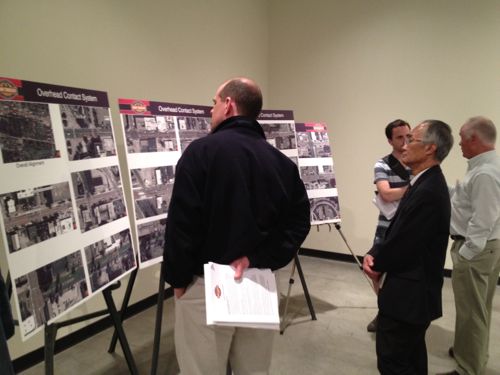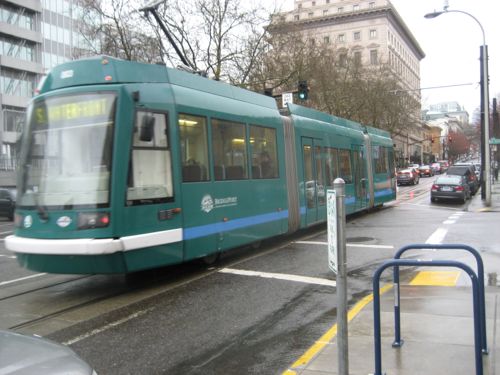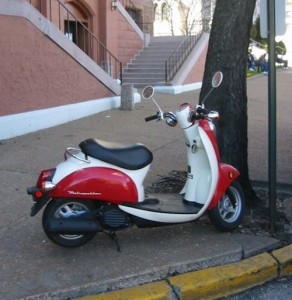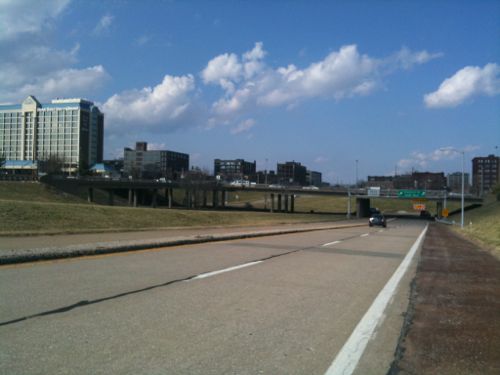Chouteau Needs To Go On A Diet
Chouteau is too fat! Not the late Auguste Chouteau — I’m talking about the avenue named after St. Louis’ founder. Chouteau Ave has four travel lanes plus generous parking lanes, it’s too wide. I couldn’t find the curb-to-curb width but the public right-of-way (PROW) is a massive 80 feet, encompassing the road and adjacent sidewalks.
Recent road diet projects on Grand and Manchester had the number of travel lanes reduced from four to two. I don’t think that’s necessary or even a good idea on Chouteau. It’s not lined with shops, although some do still exist in places. No need to make Chouteau into a low volume shopping street but there is no reason it’s can’t accommodate the current volume of vehicular traffic AND be less hostile to pedestrians. This takes a corridor study.
Chouteau Ave extends east to the river and west until it becomes Manchester as it crosses Vandeventer, 3.4 miles long. The far east end isn’t as wide and is located in what will become Chouteau’s Landing. A corridor study should focus on the 3 mile stretch from S. 4th on the east to Vandeventer Ave on the west. The issues are similar end to end but I’ll use examples for the 6/10th of a mile section between Truman Parkway/18th and Jefferson Ave.
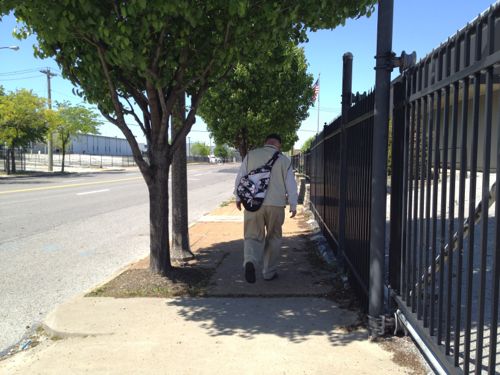
Chouteau is marked as 35mph, but given the generous widths traffic goes considerably faster.
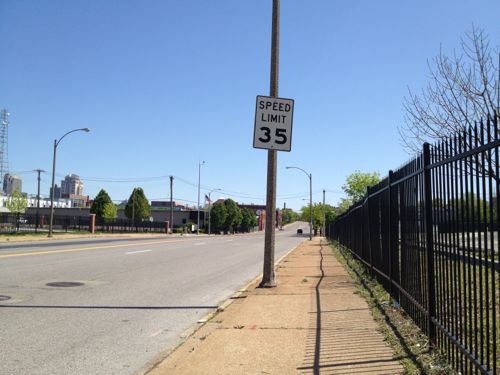
Unlike Gravois and other roads, the right side of the outside lane isn’t marked to separate it from the parking lane. Visually this tells drivers the right lane is more than 20 feet wide compared to the 8-10 feet sufficient for a 35mph road.
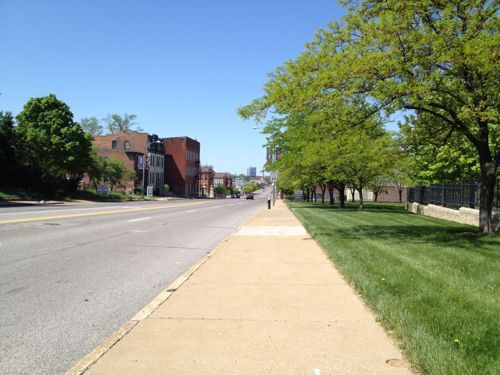
Only in a few areas does anyone park in the parking lane. , most of the time it’s vacant. Key to calming the traffic speeds is to visually reduce the perceived width of the road. This is accomplished by striping the outside lane and blub outs from the curb so the parking lane isn’t viewed as another travel lane.
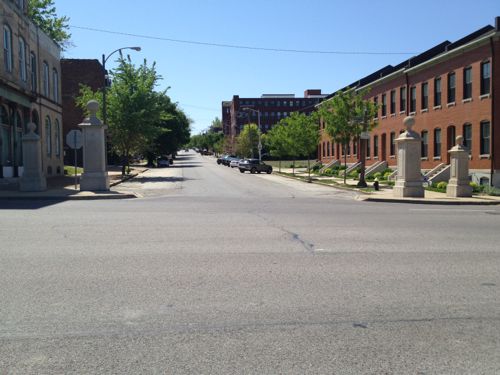
The bulb outs at Mississippi Ave had nothing to do with calming the speeding traffic but providing room for pedestrians to get around the decorative markers. Still, the push out into Chouteau is helpful but one little spot on one side only isn’t enough. Traffic has a clear shot between Truman Parkway and Jefferson, more than a half mile without a signal, stop sign or even a crosswalk. That’s right, if you live on Mississippi Ave in Lafayette Square the only two safe places to cross Chouteau Ave is Jefferson Ave or Truman Parkway.
If I wanted to have lunch at Eleven-Eleven Mississippi I’d get off the bus at the stop were I took the above picture, cross and head up the street right? Wrong. Even the able-bodied risk getting hit by a car trying to cross such a wide street with fast traffic. For me, using a power chair, I’d have to go 2/10th of mile back to Truman Parkway to cross then 2/10th of a mile back to Mississippi Ave. Realistically I’d get off the bus closer to Truman but you get the point — I wouldn’t cross here because it’s too risky. In fact — I couldn’t cross the street because there aren’t any curb cuts to make it possible.
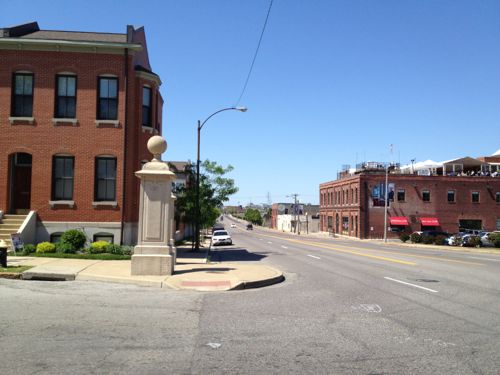
The bulb outs at Mississippi Ave have curb ramps to make it possible to continue parallel with Chouteau Ave. A corridor study of the 3 mile length of Chouteau Ave would identify key points where crosswalks are needed. Those not at intersections, like Mississippi Ave, would have a yellow caution light flashing overhead. In the 6/10th of mile between Truman Parkway and Jefferson Ave I’d suggest two pedestrian crossing points: Mississippi Ave and 22nd Street, this would equally space them 2/10th of a mile apart. Too far apart for a commercial district but adequate for this area.
This came to me recently when I attended an event at the new Sheet Metal Workers hall at Jefferson. Despite all the money spent the sidewalk wasn’t replaced.
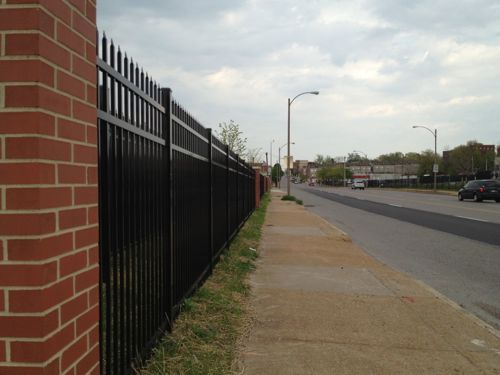
I asked Ald Kacie Starr Triplet about this at the event and she said the city will replace the sidewalk when funds are available. The sidewalk does need replacing but we should do so much more. I wouldn’t eliminate the parking lane but use bulbs to create end caps for parking and bus stop areas.
– Steve Patterson
